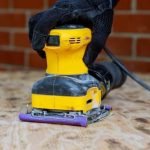Struggling with home improvement projects due to low income? Many individuals face challenges when it comes to making necessary renovations and repairs to their homes. Whether it’s fixing a leaky roof, upgrading outdated electrical systems, or making the necessary modifications for accessibility, the cost of home improvement can be a significant barrier for those with limited financial resources.
For low-income individuals, maintaining a safe and comfortable living environment is essential. Home improvement projects not only impact the quality of daily life but also contribute to the overall value of the property. However, finding the means to fund these projects can be a daunting task. In this article, we will explore various options and resources available for those seeking assistance with home improvements while on a limited income.
From government assistance programs to community resources, there are several avenues that low-income individuals can explore to make necessary improvements to their homes. Additionally, we will discuss DIY projects and budget-stretching tips that can help individuals achieve their home improvement goals without breaking the bank. By understanding the challenges and available resources, individuals can make informed decisions about how to tackle their home improvement needs within their financial constraints.
The Importance of Home Improvement for Low-Income Individuals
Home improvement is an important aspect of maintaining a safe, comfortable, and efficient living environment for everyone, including those with low incomes. While it can be challenging to afford necessary repairs and upgrades on a limited budget, investing in home improvement can ultimately save money in the long run by preventing costly emergency repairs and reducing energy expenses.
Additionally, improving the condition of one’s home can lead to better overall health and well-being for low-income individuals and families.
One option for low-income individuals seeking assistance with home improvement projects is to explore government assistance programs. Many local and state governments offer programs specifically designed to help residents make necessary repairs or renovations to their homes. These programs may provide financial assistance, guidance on finding reputable contractors, or even offer materials and labor at reduced costs. It’s worth researching these options to see if you qualify for any available assistance.
In addition to government programs, there are also low-income home improvement loans and grants that may be accessible to those in need. Nonprofit organizations, community development financial institutions, and other private lenders often offer financial support for home improvement projects through affordable loan options or outright grants. These resources can help low-income individuals make necessary improvements to their homes without causing financial strain.
| Government Assistance Programs | Low-Income Home Improvement Loans and Grants |
|---|---|
| Financial assistance | Affordable loan options |
| Guidance on finding reputable contractors | Outright grants available |
| Materials and labor at reduced costs | Accessible through nonprofits and private lenders |
Researching the Options
Many low-income individuals may find it challenging to afford home improvements due to financial constraints. However, there are several government assistance programs that can provide financial aid and support for those in need.
Here are some government assistance programs that can help low-income individuals with home improvement:
1. Low-Income Home Energy Assistance Program (LIHEAP): LIHEAP provides financial assistance to low-income households to help pay for energy bills and weatherization improvements, such as insulation and energy-efficient upgrades.
2. Housing and Urban Development (HUD) Programs: HUD offers grants and loans for home repairs and improvements through programs like the Community Development Block Grant (CDBG) program and the HOME Investment Partnerships Program.
3. USDA Rural Development Loans and Grants: The USDA offers loans and grants for home repairs, renovations, and accessibility modifications for low-income homeowners in rural areas.
It’s important to research these government assistance programs to determine eligibility requirements, application processes, and available funding options. By taking advantage of these programs, low-income individuals can access the financial support they need to make necessary improvements to their homes.
In addition to government assistance programs, there are also nonprofit organizations and local agencies that provide resources for home improvement assistance. By exploring these options, low-income individuals can find the necessary support to improve their living conditions despite financial limitations.
Exploring Low-Income Home Improvement Loans and Grants
When facing the need for home improvement with low income, exploring the option of loans and grants can provide a much-needed solution. While traditional loans and grants may seem out of reach for those with limited financial resources, there are actually several avenues that individuals in this situation can explore to get the assistance they need.
One option for low-income home improvement loans is through the Department of Housing and Urban Development (HUD). HUD offers various programs such as the Single Family Housing Repair Loans & Grants and the Section 504 Home Repair program, which specifically cater to individuals with low income. These programs provide loans and grants for home improvements, making it accessible for those who may not qualify for conventional loans.
Another avenue to consider is applying for home improvement grants from non-profit organizations. Many organizations offer financial assistance specifically designed to help low-income homeowners make necessary repairs or improvements to their homes. These grants can be used for a variety of purposes, from fixing structural issues to making energy-efficient upgrades.
It’s also important to research and compare different loan options available from local banks or credit unions. Some financial institutions may offer specialized loan programs tailored for low-income individuals. Additionally, federal or state government agencies may provide loan options that are accessible to those with limited income. Taking the time to explore all available resources will increase the chances of finding a suitable loan or grant that meets one’s needs.
Tips for Making Your Home Improvement Budget Stretch
When you have a low income, finding the funds for home improvement projects can be a daunting task. However, there are several tips and strategies that can help make your home improvement budget stretch further, allowing you to make necessary upgrades and repairs without breaking the bank.
Prioritize Your Projects
One of the most important tips for making your home improvement budget stretch is to prioritize your projects. Identify the most critical repairs or upgrades that need to be addressed first, such as fixing a leaky roof or addressing plumbing issues. By focusing on the most urgent needs, you can ensure that your limited funds are being allocated to the most essential areas of your home.
Shop Smart
Another way to stretch your home improvement budget is by shopping smart for materials and supplies. Look for sales, discounts, and clearance items at hardware stores and home improvement centers. You can also consider purchasing gently used or reclaimed materials from salvage yards or online marketplaces to save money without compromising on quality.
Consider Do-It-Yourself (DIY) Solutions
Embracing do-it-yourself (DIY) solutions for home improvement projects is a great way to save money when you have a low income. Many basic repairs and upgrades
By implementing these tips for making your home improvement budget stretch, low-income individuals
DIY Home Improvement Projects for Low-Income Individuals
When you’re working with a limited budget, do-it-yourself (DIY) home improvement projects can be a great way to make valuable enhancements to your living space without breaking the bank. With a bit of creativity and some elbow grease, you can tackle a variety of projects that will improve both the functionality and aesthetics of your home. Here are some DIY project ideas for low-income individuals looking to spruce up their living spaces.
Painting and Refreshing
One of the most cost-effective ways to transform a room is by giving it a fresh coat of paint. Whether you want to create a new accent wall or simply refresh the existing color, painting is a relatively simple and inexpensive way to update your space. You can also consider updating the trim, baseboards, and doors with a fresh coat of paint for an even bigger impact.
Upcycling Furniture
Instead of buying new furniture, consider upcycling or repurposing items you already have. A quick sanding and a fresh coat of paint or stain can breathe new life into old furniture. You could also consider switching out hardware or adding embellishments to give your furniture a custom look without spending a lot of money.
Landscaping and Outdoor Projects
Improving your outdoor space doesn’t have to cost a fortune. Simple landscaping projects like planting flowers, adding mulch, or creating garden borders can significantly enhance your home’s exterior. Additionally, DIY outdoor projects like building raised garden beds or constructing a small patio area
By implementing these DIY home improvement projects, low-income individuals can take proactive steps towards enhancing their living environment without relying solely on expensive professional services. With creativity and resourcefulness, it’s possible to make impactful changes within budget constraints.
Utilizing Community Resources for Home Improvement Assistance
When facing the challenge of home improvement with a low income, it is important to explore all available options. One such option is utilizing community resources for home improvement assistance. Many communities offer programs and services designed to help low-income individuals make necessary improvements to their homes.
One way to access community resources for home improvement assistance is by contacting local non-profit organizations and community development agencies. These organizations often provide financial assistance, low-cost or free materials, and even volunteer labor for home improvement projects. Additionally, some may offer workshops and classes on DIY home improvement methods, providing valuable knowledge and skills to low-income individuals.
Another valuable community resource for home improvement assistance is local churches and religious organizations. Many of these organizations have outreach programs specifically geared toward helping those in need with home repairs and improvements. They may have volunteers who are willing to donate their time and skills, as well as access to donated materials or funds designated for assisting low-income homeowners.
In addition to non-profit organizations and religious groups, some municipalities offer home improvement assistance programs for low-income residents. These programs may provide financial aid or no-interest loans for eligible individuals, as well as resources such as discounted building permits or tax credits for certain types of improvements. By tapping into these community resources, low-income individuals can find valuable support in making necessary improvements to their homes.
| Community Resource | Services Provided |
|---|---|
| Non-profit Organizations | Financial assistance, low-cost/free materials, volunteer labor, workshops |
| Religious Organizations | Volunteer labor, donated materials/funds, outreach programs |
| Municipalities | Financial aid/no-interest loans, discounted building permits, tax credits |
The Future of Home Improvement Access for Low-Income Individuals
In conclusion, while it may be challenging to borrow home improvement funds with a low income, there are still various options available for individuals in this situation. From government assistance programs to low-income home improvement loans and grants, there are resources that can provide the financial support needed to make necessary improvements to your home. Additionally, utilizing community resources and DIY projects can also help lower the costs of home improvement for those with limited income.
As the future of home improvement access for low-income individuals continues to evolve, it is important to stay informed about any new programs or resources that may become available. It is possible that more initiatives will be developed to provide financial assistance specifically tailored to those with low income who are looking to improve their homes. By staying proactive and researching all available options, individuals can increase their chances of finding the support they need.
Ultimately, while the challenges of borrowing for home improvement on a low income can be daunting, it’s important not to lose hope. With the right combination of research, budgeting, and resource utilization, it is possible to make necessary improvements to your home without breaking the bank. Whether through government assistance programs, community resources, or cost-effective DIY projects, there are ways for low-income individuals to access the support they need for home improvement efforts.
Frequently Asked Questions
What Are the Requirements for the Property Improvement Program in Michigan?
The Property Improvement Program in Michigan requires applicants to own the property, have good credit, and demonstrate the ability to repay the loan. The program also requires compliance with environmental regulations and building codes.
What Is a Home Improvement Loan Called?
A home improvement loan is often called a “home renovation loan” or a “home equity loan”. These loans allow homeowners to borrow against the equity in their property to fund renovations or repairs.
What to Do When Your House Is Falling Apart and You Have No Money?
When your house is falling apart and you have no money, it’s important to prioritize urgent repairs and seek out assistance from government programs, non-profit organizations, or charitable foundations that offer home repair grants or low-interest loans. It’s also worth exploring DIY options and bartering for labor or materials to address critical problems.

I’m thrilled to have you here as a part of the Remodeling Top community. This is where my journey as an architect and remodeling enthusiast intersects with your passion for transforming houses into dream homes.





